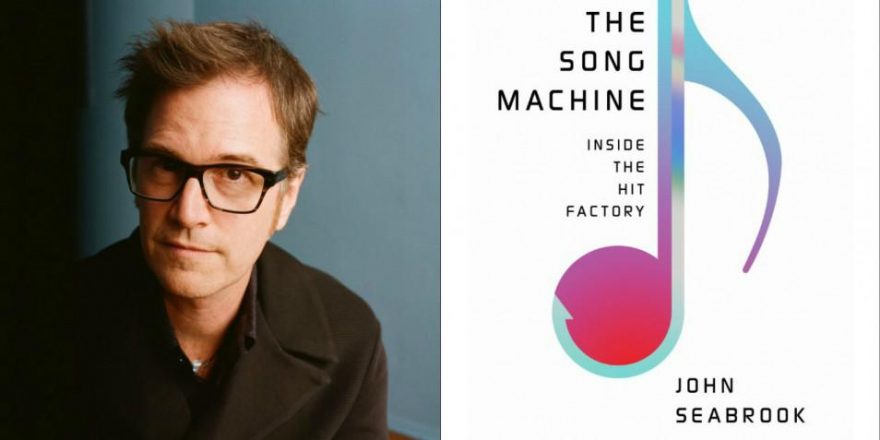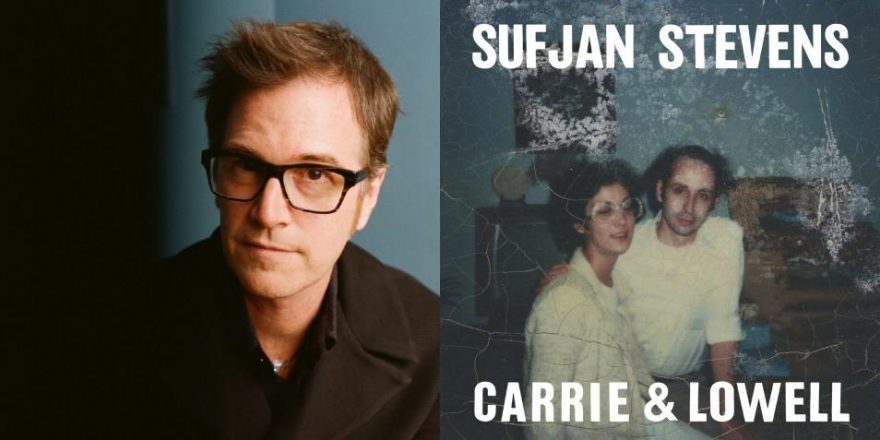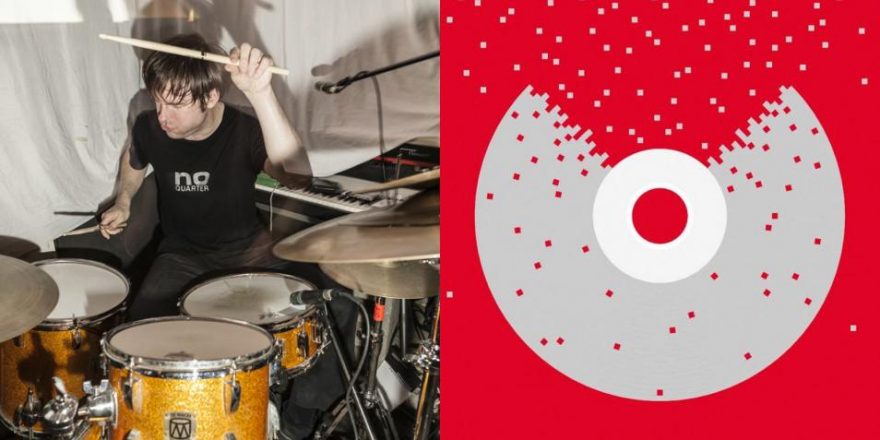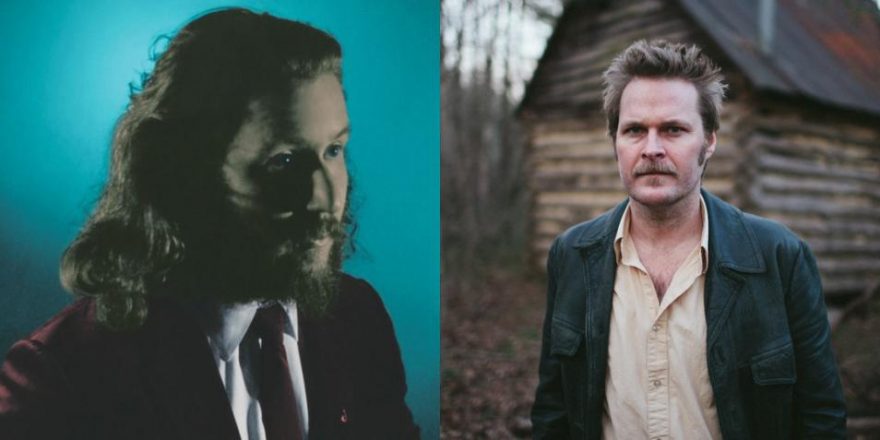Dear young or medium-young songwriter/record-producer: read John Seabrook’s The Song Machine: Inside the Hit Factory at your own risk. The book is a highly readable industrial history about today’s world of pop songwriting and the marketing of pop songs and artists such as Katy Perry, the Backstreet Boys and Kelly Clarkson. It lays out the methods of some of today’s hit-makers as though their pop formulas are available to all. This book may make you feel like you’re getting the keys to the kingdom. But there is more than one kingdom, and beware: if you do win the keys, and you become a king or queen, you can’t switch realms. Once the public knows and adores you, they will only want more of whatever you first gave them. Give them great art that marches to the sound of your own unique inner drummer, train yourself to be a great chef of sound and feed people with beauty, complexity and greatness, and your reward will be that the world asks you for more greatness. But give the world fluffy, pointless junk-food, and your reward — and punishment — will be the sound of the world requesting that same junk food from you, forevermore.
I’m a songwriter, too. I think music is one of the deepest paths to human connection that there is. And I love pop music. Almost all of my favorite songs have been hits (especially if you count Mozart’s piano Sonata K.545 in C major, Duke Ellington’s “Sophisticated Lady” and the Christmas classic “Oh Little Town of Bethlehem” as hits.) I’ve had the amazing good luck to make songwriting my life’s work, and to be rewarded by the world for that work. And I’ve actually written a bunch of hits. But so far I haven’t found anything close to an industrial method to streamline the process. A lot of the time it feels like wandering in the dark. It’s false start after false start, promising ideas that turn into dead ends, excitedly finished songs that, when all is said and done, are merely… good. And then, out of nowhere, a great one. I’ve written and recorded with many of the most important songwriters working today, and almost all of them have the same experience. The only thing that seems like a near-universal principle of writing great songs is that you have to write a lot of bad and OK ones to get a great one. The greatest of those seem to arrive almost by accident. Even the most “scientific” writers do a ton of trial and error, iterations, revisions and shopping out for alternate solutions.
And how devilishly hard it is to hit that mark! Part of the reason it’s so tricky is that, in a great song, there are several different systems of meaning being manipulated at the same time. I could say there are four elements that songwriters employ: rhythm, melody, lyrics and poetry. Rhythm, the pulse, or groove — that makes people dance. Rhythm was nearly the most important element even in Mozart’s day; he wrote hundreds of pieces for people to dance to. Melody speaks to our animal nature and triggers ecstatic joy or cathartic tears when it’s just right. Lyrics can be as simple or as complex as you wish, and carry a huge amount of the emotion and storytelling meaning of the song. Finally, there is the poetry in the words. By that, I mean not only the rhyming of lines, but also the way the vowels make the melodic notes ring out, and the way the consonants make the rhythms move. Getting these four interlocking systems to play well together is so tough that I can be pretty happy with only getting one of the ideals just right, overjoyed when I get two, ecstatic when they all come together at once: rhythm, meaning, poetry, melody.
In The Song Machine, Seabrook examines the creation of hit songs, and a particular kind of hit song: a radio hit, optimized almost scientifically to generate a craving in the radio listener to stay tuned. He also examines the ever-increasing reliance of singers and record labels on behind-the-scenes songwriter-producers, reclusive sonic geniuses such as Dr. Luke, Stargate and Max Martin.
Increasingly, hit songs are created with a collective approach. Various sections of a single song can be written and recorded by entirely separate pop songwriting teams, often in different cities, then melded later in the producers’ computers. Seabrook attempts to illuminate the working methods and personalities of the small ecosystem of pop songwriter-producers, many of them Swedish, whose collectives have dominated the pop charts for many years.
All very interesting and seemingly innocent. It’s a fun read. So why did it take me a week to shake off the despair and hopelessness that this book brought forth in me?
The Song Machine begins with a chapter about Seabrook’s son growing big enough to move to the front seat of the family car. The boy takes over their listening choices on the way to school. Out with classic rock, in with Top 40. Seabrook describes his first exposure to the alien, computerized sounds of these new songs when he and his son listen to Flo Rida and Pitbull’s 2009 club hit “Right Round.” His first reaction of bafflement is replaced by a slow dawning of appreciation. He may not love these strange new hits, but he appreciates them as a fascinating kind of industrial product, engineered for impact, volume and ultra-hookiness. Where the songs of Seabrook’s childhood had one hook, or catchy phrase, that listeners would wait for, these new hits were back-to-back, non-stop hooks. Where the older songs would use coded language to smuggle sexual or social meanings onto the radio, these new songs blared their risqué messages. Where double-meanings once cleverly hid risqué ideas, now both sides of the puns were risqué.
Seabrook is fascinated, and the sweetness of a father peeking into the musical world of his kids with fascination rather than revulsion is maybe the last moment of pure light in the book. But even in these early pages, the dad senses a dark undercurrent in the new musical experience he’s having: the hook-filled songs may promise bliss, but “…the ecstasy is fleeting, and like snack food they leave you feeling unsatisfied, always craving just a little more.” These songs are designed not to satisfy, not to leave you elevated or empowered. They are designed to keep you on the hook, compelled to continue listening to the radio station’s ads; and they are designed to imbed themselves in your mind so relentlessly that you must buy the song. And these songs have little to no “message,” lyrically: no idealism, no calls to action, no higher purpose to speak of. These are songs that have little purpose but to sell themselves: they are not stand-alone works of art; they are simply jingles for their own sales.
Unfortunately, Seabrook eventually lets go of his early skepticism and by the end seems to embrace a very functional view of songwriting: if it sells, it’s good. This is not an unusual stance to take in our culture: movie fans seem sometimes to be more interested in the weekend grosses of new flicks than whether or not the movies are actually great. Statements made in presidential debates are assessed according to how much they made an opponent sputter, rather than how much sense they make for the future of our country. A song is valued not for its truth but for its stickiness as a meme. Click-bait as the highest aspiration of a cultural creation.
One of my favorite short-story writers, George Saunders, says that in our world there is “an increasing acceptance that if something is ‘effective’ (profitable, stockholder-enhancing), then that answers all questions of its morality. This insistence on the literal and provable and data-based and pragmatic leaves us, I think, only partly human.”
I believe that music is one of the deepest channels to our human hearts and our dreams and our aspirations. Even a simple song can contain deep human truths, can bring us hope and joy, can inspire us to live better lives, to love, to grow, not to mention to have fun. But to reduce music to literal, provable, practical hit-assembly leaves it only partly human.
So where did Seabrook go so wrong over the course of The Song Machine as to embrace the trivial, often crass and mostly purely functional singles he writes about? Perhaps during his research, Seabrook’s immersion into the relentlessly trite songs he explored allowed him to perceive beauty and a kind of meaning in their skimming of the surface.
Or maybe he suffered a kind of musical Stockholm syndrome: having been taken captive by the pop-industrial protagonists of his book, he began to identify with their point of view and values. Who needs lyrics, beyond as simple slogans and a series of awesome-sounding vowels? Who needs a message? The only reason to write a song is to have a hit. A song that isn’t a hit is nonexistent, nothing at all.
After several very interesting explanatory chapters, the book’s narrative begins with a flashback to Denniz Pop, the Swedish DJ and Stockholm bon vivant who becomes a hit record producer. Producing and writing with early ’90s pop band Ace of Base was his first big break. Just as important was Pop becoming the mentor and protector of a generation of Swedish producer-songwriters by gathering them together at his music production house, Cheiron. Notable among these is Max Martin, who would eventually grow from being Pop’s protégé to the most successful pop songwriter-producer ever. Seabrook outlines the sonic and compositional strategies that eventually become Martin’s trademarks, even to this day.
My first inkling that this would not be a happy read was in this section of the book, where Seabrook first outlines a major philosophical stance of the Cheiron producers: that a song’s lyrics don’t need to make any sense; they “only need to tell you how to feel when you hear the music they accompany.”
Seabrook then recounts, with little irony, a description of the system that Denniz Pop had devised, and which Martin perfected over time: “melodic math,” a method of matching words to musical notes such that the melody sounds great, regardless of the sense or nonsense of the lyrics. This system allowed the lyricists to ignore the meaning of the words in favor of the vowels that they matched to the tune. The Swedes at Cheiron had the advantage of not speaking English that well, so they could focus more clearly on how great the vowels sounded with the melody. Seabrook describes this as a necessary trade-off, the sacrifice of meaning for the sake of great-sounding vowels. Unfortunately, in the process of drinking the Cheiron Kool-Aid, Seabrook forgets or ignores that the great lyricists have always valued not just melodic math but the meaning of the words. The best could make all interlocking systems — lyrical meaning, vowel sounds and melody — work at the same time. In fact, the history of poetry has, in large part, been the history of getting the melodic math right without sacrificing emotion, meaning and rhyme. But Seabrook trumpets Cheiron’s melodic math as a step forward, rather than a reduction, a removal of the pesky element of lyrical meaning from songwriting. So depressing!
Fortunately, there’s no time to mope. From Stockholm and Ace of Base, we move to Orlando, where music manager Lou Pearlman is grooming his new boy band, Backstreet Boys, for fame. His quest for songs to launch the group leads him to, yes, Denniz Pop and the Cheiron production house. Backstreet Boys’ rise to fame is stratospheric, and Pop and his young songwriting partner Max Martin rise along with them.
But soon, the fun in the Florida sun is dimmed: Pearlman double-crosses the Backstreet Boys, secretly forming another all-boy band, ’N Sync, to compete with them. He begins managing a young singer, Britney Spears. Spears’ recordings of “Hit Me Baby One More Time” and “Oops I Did It Again” cement Max Martin’s status as a hit writer-producer, but Spears’ descent into seemingly drug-addled chaos complicates efforts to keep her on the charts. Soon, all hell has broken loose in the courts. All of Pearlman’s management clients eventually bring lawsuits against the impresario. Pearlman’s interviews for this book were conducted from the federal prison where he is serving various long sentences for conspiracy, money laundering, fraud and perjury.
Rocketing undamaged out of the wreckage of Lou Pearlman’s empire are the songwriting and production teams that fueled his artists’ massive successes, many of them former Cheiron producer-writers. Their collective songwriting methods and style are now embraced by the music industry as the de facto gold standard in the manufacture of hits.
As interesting as Seabrook makes the industrial methods used to create radio fodder, and as tasty as he tries to make the schadenfreude surrounding the book’s most tedious and sleazy characters, I had an odd realization about 100 pages in: despite the musical subject of the story, Seabrook’s book had not yet mentioned a single song that I thought of as actually awesome.
Yes, there were lots of hits listed, lots of songs that got radio love, but not a single great song. I started a little bet with myself, trying to guess when the first great song title might accidentally crop up. Finally, on page 132, it happened: Dolly Parton’s amazing “I Will Always Love You.” The mere title of this song, a paragon of simplicity, emotional vulnerability, compassion — along with a pretty good helping of melodic math — was like a ray of light in the darkness of the narrative. Unfortunately, the moment was quickly over: the song is only mentioned in passing, and then only by way of illustrating uber-producer David Foster’s icky concept of “the money note” in a song.
Still, it was something — a brief mention of an actually great song. Then another ray of hope as the next chapter opened with the tale of the rather good “Since You’ve Been Gone,” recorded by Kelly Clarkson.
Alas, the awesomeness quotient never really picks up after that. Our author continues following the undeniable success story of the makers of a certain kind of emotionally narrow, melodically brilliant Top 40 hit, particularly those who hybridize American R&B grooves with happy-sad European dance-pop melodies. Brief mention is occasionally made of hip-hop, but only as an ingredient in the all-star stylistic stew that these producer-writers work hard to perfect.
Seabrook attempts some historical perspective with a discussion of pop music cycles: from musically risky innovation to pop consolidation and finally to doldrums, which then lead to innovation and extremism again. He also charts the disruption wrought by Napster and file-sharing in general, which eventually shrinks the music business by a huge factor. This shrinking pie increases the competition between labels and feeds into their ever more rigorous scientific approach to guaranteeing that a record be a hit.
For a few chapters, the book begins to read like the history of a stock market boom (the CD business until the Napster age), bust (file sharing) and recovery (scientific song machine approach revitalizes profits for a diminished but still powerful music business).
The reduction of the exalted world of music to a kind of market-based fluctuation is hard enough for a songwriter like me to stomach. But Seabrook knows that for most readers, this unemotional bird’s-eye view won’t do. A pop culture book needs darkness, and plenty of it, and our heroes mostly oblige.
Soon enough, the themes turn to personal turmoil and disappointment. Hit “topliners,” writers who create their hooks by singing over the already recorded tracks of producers, try and fail to gain their own fame as artists. Meanwhile, the topliners’ managers seem to conspire in their artistic failures. After all, the topliners earn their managers tons of money by writing for other artists — what fool would allow their golden goose to change careers?
In other storylines, cold, Svengali-like producers and record men thwart their artists’ strange and perhaps wrong-headed musical dreams, replacing these visions with tried-and-true pop fodder.
Bruises, domestic abuse and sadness abound. Casual misogyny: Seabrook reports that Jay Z, then president of Def Jam Recordings, jokingly (perhaps) threatens to throw the young Rihanna out the window of his office if she doesn’t sign a deal with his company. Everyone grapples with drug-addicted artists, and eventually the story of dueling high profile sex-abuse and breach-of-contract lawsuits between singer Ke$ha and her producer Dr. Luke overshadows the other action.
Nobody comes off very well, and most come off very badly. Jill Sobule’s at-first-polite and then increasingly profane and funny rant about Katy Perry perhaps stealing the title of Sobule’s hit song “I Kissed a Girl” for her own song, “I Kissed a Girl,” is a nice break from the downward spiral of the final chapters. (Sobule is skeptical about Perry’s claim to have thought of the title in a dream, especially since Sobule and Perry were signed to their record deals by the same A&R man, twelve years apart.) But otherwise we ping-pong unhappily from one sad tale to another, to a soundtrack of trivial, crass and/or intentionally irritating landfill-bound musical products.
Only two characters escape the slow descent into sordid greed and bad faith that Seabrook eventually chooses as his dramatic arc. The first is Denniz Pop. Aside from having been a seemingly irrepressible source of joie de vivre, Pop died young (age 35) from stomach cancer, and this, along with his mentoring role in the lives of many of pop music’s top figures, casts him in a golden light in the book.
The other player that Seabrook spares is Pop’s top protégé, the elusive and rarely interviewed Godot of modern pop, Max Martin, who was either wise enough to avoid Seabrook’s interview requests or merely doesn’t care about promoting his own fame. Martin, whose delicious collaborations pointedly decline to illuminate any of his own personality, passions or quirks, or whose quirks are by now the lingua franca of the charts and thus seem normal, is portrayed as a mysterious and positive spirit passing through the story, even as he gathers enormous influence over the music business and the artists whose voices he sculpts. Although Seabrook spends little time examining Martin’s personal life, he does go into some detail trying to elucidate the super-producer’s musical methods, and fittingly so, as Martin’s presence in pop music is overarching.
But even such a genius producer, to do his very greatest work, needs a genius artist to work with. And here is the omission in The Song Machine that most dismayed me: where are all the great artists? With too few exceptions, the singers are treated almost as afterthoughts in the creative process of making music. Long stretches of the book examine the process of making songs for nearly interchangeable young people to sing (or pretend to sing). But great producers — such as Quincy Jones, George Martin, Steve Lillywhite, Doctor Dre, Rick Rubin, Brian Eno — all collaborate with the very highest level of recording artists. The Cheiron practice of bleaching out artistry from the lyrics and messages of their songs may have made them strangely immune to the need for great artists. So if there’s anything really dismaying about the Cheiron legacy, it’s how seldom any of their number have hooked up with a real genius of an artist. On the other hand, this year’s amazing Weeknd album, Taylor Swift’s career-transforming work with Max Martin, Sia’s new song “Try Everything” for Shakira, written with Swedish pop producers Stargate — these are hopeful signs that the song machine is getting a bit of a flesh-and-blood makeover. And they are visible evidence of what all songwriters know: that the secret sauce of all of these supposedly machine-like methodologies is human chemistry.
And after all, the “song machine” that Seabrook talks about is just one song machine — far from being the source of our entire musical landscape. After a few hundred dispiriting pages of the book, I remembered how many great songs there have been recently which never went through the machine-like songwriting process that Seabrook describes. “Somebody That I Used to Know” by Gotye, “Happy” by Pharrell Williams, “We Found Love” by Calvin Harris, and “Take Me to Church” by Hozier are all huge hits and fantastic songs with only one writer and one producer. Not to mention plenty of amazing songs made for purposes other than topping the charts.
In the presence of chart statistics, stories of power and fame, and victories of business, it’s so easy to forget that money and influence are not the only valid goals in the creation of music, to forget that money and influence are not great predictors of happiness or musical satisfaction. If music were purely trivial fun, then it would be OK to apply a purely monetary test for success. Or if music were just an evolutionary process without meaning, then yes, we would look only to the survivors. Seabrook may argue that he was, in fact, writing about the “survival of the fittest” battle that is waged on the charts, and that it is a sad trait of most huge hits that they are silly and disposable. But that is to forget that most composers’ aspirations are of the highest order, even within the field of popular music, and that there are other standards to apply than victory on the sales battlefield.
I’ve had this conversation many times with my friends in the field of pop production and writing: how the biggest and best songs don’t come on the day when everyone sits down and says, “Let’s write a smash!” Instead those huge songs happen sideways — someone says something startling or funny, someone else plays a chord or drumbeat, the song is nearly done before anyone in the room realizes what is happening. It took a lot of practice to get to that writing session, but on that day, the song nearly writes itself.
So, dear young or medium-young songwriter-record-producer, if your main goal in this game of music is to get to the top of the charts to prove your enemies wrong, or to buy a big boat and populate it with exotic dancers, or to start a fragrance or clothing line, then by all means, read The Song Machine carefully and put its many lessons to work. Because you don’t really care about music, you care about the money and fame that music is going to deliver to you.
But if you want to write or sing a song that changes people’s lives, that connects you to the deepest emotions in your audience’s hearts, that alters the vibration of human consciousness, that opens someone’s mind to the possibility of a better world, then you might want to tread cautiously into The Song Machine. Or read a different book.








